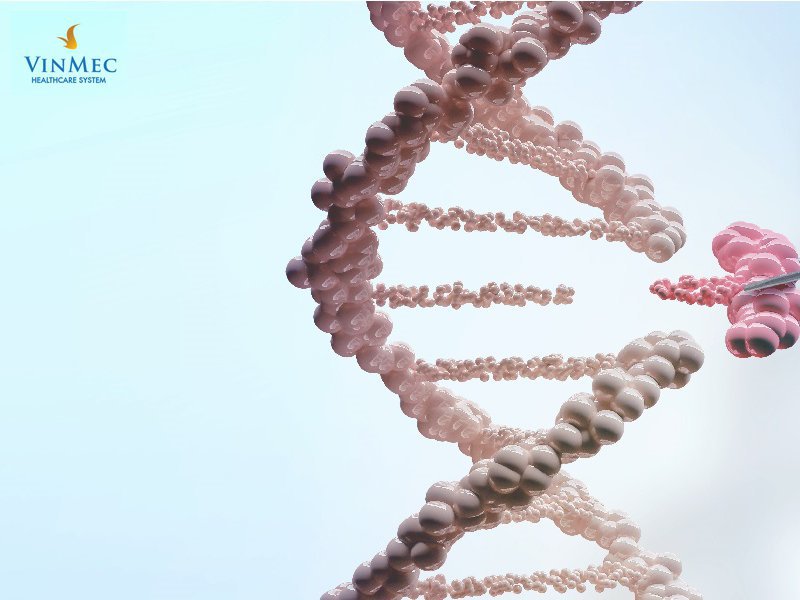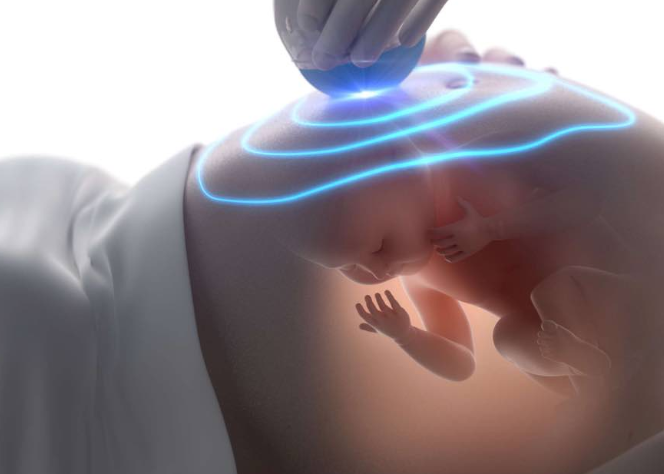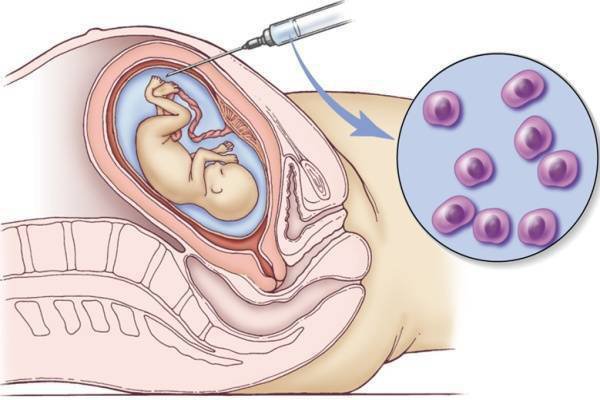The article was consulted professionally by Master, Dr. Nguyen Thi Hong Thank – Obstetrics and Gynecology Department – Share99 Phu Quoc International Health Hub.
Fetal malformations are defects on the body of a baby that are suffered as soon as they are in the womb that can be recognized until birth. Today, thanks to the development of modern medicine, parents can detect fetal malformations right from within the womb thanks to pre-birth screening tests.
1. Purpose of pre-birth diagnosis
Pre-birth diagnosis helps to detect early pregnancies with severe birth defects, genetic diseases or intellectually minimized children: Down syndrome, Trisomy 13 (3 chromotype No. 13), Trisomy 18 (3 chromotype No. 18), Thalassemia … thereby advising the pregnant woman and her family towards the end of the pregnancy in order to reduce the burden on the family and society. Early diagnosis of post-birth repairable fetal malformations such as cleft lip, cleft palate, bare limbs … will help to better prepare the couple.
2. 7 pre-birth diagnostic measures
Pre-birth diagnostic measures include:
- Genetic diagnosis of pre-nesting.
- ultrasound.
- Vegetable spike biopy.
- Suck the amniotic fluid.
- Bloodsucking umbilical cord.
- Mother's blood test (triple test, quadtro test).
- Free DNA testing in the mother's blood.
2.1 Pre-nest genetic testing
Pre-nest genetic testing techniques are used to identify genetic abnormalities of IVF embryos (in vi vismable inse fertilization) before transferring the embryo into the mother's uterus. Pre-nest genetic testing helps diagnose NST X-linked genetic disease while determining sex.

2.2 Ultrasound
Diagnostic ultrasound helps detect:
- Head malformations: Dilation ofthe brain, hydrocephalus, neurological malformations (cerebral hernia, meninges), infertility
- Heart defects: Left atrial minority, arterial root island, septum medogenic mitigation, Ebstein syndrome, quadriplegic Fallot syndrome, equestrian aortic.
- Thoracic malformations: Diaphragm hernia, cystic lung
- Digestive system malformations: Oesophageal atrophy, umbilical hernia,abdominal wall openings
- Kidney and urinary malformations: Stagnant kidneys, polycystic kidneys, ovarian tumors
- Other malformations: Osteoporosis, bone cartilage dysenterosis, vertebrae gap
Ultrasound measures the blurred skin of the nape of the neck and nasal bones that achieve accurate results when the measurement time is from 11 weeks to 13 weeks 6 days, the initial screening to see if the fetus has any chromo chromo population abnormalities or has Down syndrome.

2.3 Vegetable prickly bioped
This is a procedure performed in the early stages of pregnancy, from 12 to 14 weeks of age, which helps to check for fetal malformations. This pre-birth diagnosis procedure is performed when the parent has a family-based genetic disease, the mother is over 35 years old.
Vegetable spike biopics are performed by sampling vegetable cakes from the uterus with a catheter (a long tube) or a needle poking through the abdomen or vaginal line of the pregnant woman under the instructions of ultrasound.
2.4 Amniotic drainage
Amniotic puncture is usually performed at the age of 16 weeks or more. Amniotic punctures and vegetable spike bios are only performed on women at high risk of giving birth to babies with genetic disorders, due to their father and/or mother having a genetic disease, a history of childbirth with malformations, or a pregnant woman over the age of 35.
Amniotic puncture is performed using a very small needle, injected through the abdominal wall into the uterus under the instructions of ultrasound and sucks a small amount of amniotic fluid necessary for diagnosis. The pregnant body will regenerate the amount of amniotic fluid that is sucked out. For the most part, the baby will not be affected during and after the procedure. Some pregnant women will have mild abdominal pain during or after the procedure

2.5 Umbilical cord bloodsucking
Umbilical cord blood puncture method to diagnose fetal genetic abnormalities as prescribed by the doctor. This technique is performed at pregnancy 11 – 13 weeks of age.
Under the guidance of ultrasound, a needle end is inserted through the abdominal wall of the pregnant woman into the uterus, followed by the blood vessels in the umbilical cord, about 1cm from the place of each other's leaves. A small amount of blood is removed for testing and gives diagnostic results in case of suspected pregnancy with anemia, measles infection, toxoplasma infection, herpes or delayed pregnancy. The risk of complications for the fetus when performing this method is quite high, from 1-2%.
2.6 Double triple test, Quadtro test
- Double test: PAPP-A+ β-hCG
- Triple test: AFP+hCG+Estriol
- Quadtro test: AFP+hCG+Estriol+Inhibin A
Of which:
- PAPP-A (Pregnancy Associated Plasma Protein A) is a placenta-secreted glycoprotein found in the mother's serum
- AFP: Alpha-fetoprotein is a protein secreted by the baby's liver.
- HCG hormone: born from the placenta
- Estriol: a placenta and liver hormones of the baby.
- Inhibin A: hormones produced by the placenta and ovaries.
Double test combines measurement of nape skin opacity by ultrasound, m mother's age , gestational age,… to assess the risk of chromic abnormalities such as Down's syndrome, Edwards (Trisomy 18) and Patau (Trisomy 13). Double test is usually performed in the first quarter, i.e. about the first 3 months of pregnancy. Double can be best done between the 11th – 13th week of pregnancy, at best during the 12th – 13th week of gestation. Based on the results of an ultrasound to determine the gestational age, the pregnant mother can perform a test after an ultrasound examination to measure the translucity of the nape of the neck.
Triple test is performed when the fetus is 15 – 20 weeks old to find out the risk of neurological malformations. However, for the most accurate results, it is recommended to get tested at the 16th – 18th week of gestation. Triple test uses mother's blood to check for fetal malformations thanks to increased or decreased changes of the above 3 indicators to help doctors predict the risk of abnormalities. All pregnant women should be given this test, especially high-risk pregnant women: Families with a history of birth defects, pregnant women over the age of 35, who use medications or substances that may harm the fetus, diabetes, and insulin use , infected with the virus during pregnancy, working or living in an environment exposed to chemicals, high-dose radioactivity,…
Quadtro tests (also known as Quad tests) are performed between weeks 15 and 20 of pregnancy by taking blood from the veins of the pregnant woman's arms. Quad test results showed the risk of fetal malformations or chromochromochromia deviations, such as vertebrae fissure or Down syndrome (3 NST No. 21), Edwards Syndrome (3 NST No. 18). The subject of quad test is similar to the triple test mentioned above.
2.7 DNA testing in the mother's blood
Dna testing in the mother's blood is also known as a nipt non-invasive genetic test. NIPT is a DNA test of pregnancy in the mother's blood to screen for NST abnormalities of pregnancy: 3 NST 21, 3 NST No. 13, 3 NST No. 18,…
Nipt non-invasive genetic testing is considered the "key" to "deciphering" fetal malformations from a very young gestational age, only 9-10 weeks old. NIPT is recommended for high-risk and routine implementation at Share99. The results of the analysis will be available in about 1-2 weeks and are appraised by genetic pathology specialists at the Institute of Stem Cell Research and Gene Technology and will be paid through various methods such as direct payment, home payment, email or phone number. Customers will be consulted specifically on the risks that may be encountered, especially for negative/false positive cases for appropriate intervention.
Screening for fetal malformations during pregnancy can detect and intervene early in the fetus or early post-birth treatment, helping the child to develop normally. In some cases, the fetus carries too severe defects, it is difficult to survive will help the pregnant woman make the decision to keep or abandon the fetus. Therefore, the results of fetal malformations screening play a very important role, so when choosing a pregnancy examination facility, pregnant women should choose reputable medical facilities that are safe for accurate diagnosis.
Share99 International Health Hub is proud to be a high-quality medical facility that is highly appreciated by customers for the quality of examination and treatment as well as professional services. Share99 has the most modern equipment system, with the most advanced ultrasound and testing machines in the world and a team of obstetricians experienced in diagnosis and pre-birth intervention to help monitor obstetrics well and detect fetal malformations early.
For more information about maternity and maternity examination packages at Share99, please contact Share99 hospitals and clinics nationwide.
For direct advice, please click hotline number or register online HERE. In addition, you can register for remote consultation HERE
- Umbilical cord blood pokes in pre-birth diagnosis
- Pregnancy at age 40: What to know
- Pregnancy at age 30: What to know

